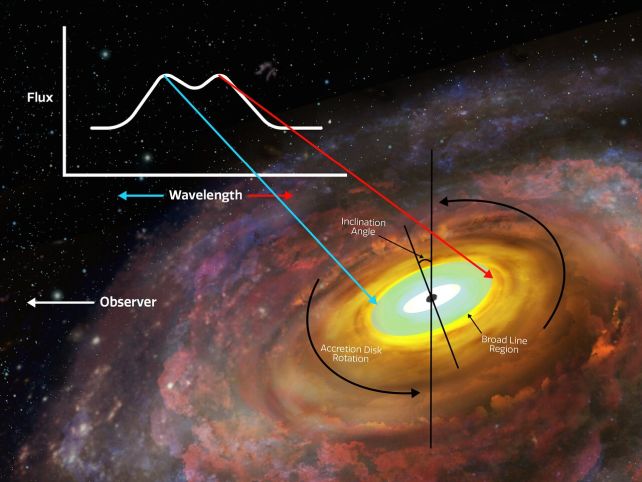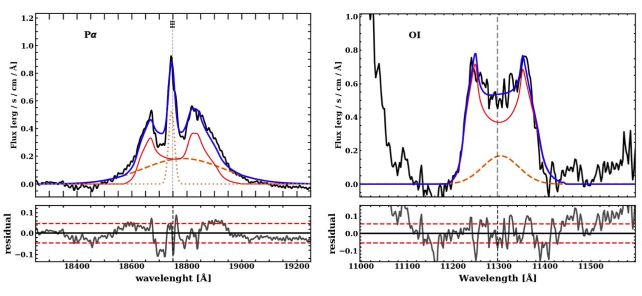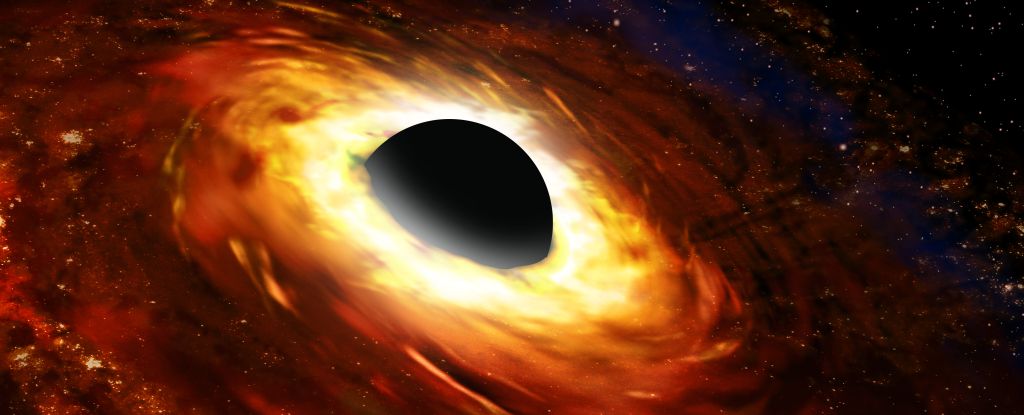Products You May Like
An active supermassive black hole is one of the greatest wonders in the cosmos.
A dense, invisible object that can be billions of times the mass of our Sun is surrounded by a vast, churning disk and torus of material, blazing with light as it swirls down onto the black hole center. But how big do these structures grow?
For the first time, an unambiguous detection of near-infrared light reveals the outskirts of the massive accretion disk surrounding a supermassive black hole hundreds of millions times our Sun’s mass, in a galaxy called III Zw 002 some 1.17 billion light-years away.
These detections, led by astronomer Denimara Dias dos Santos of the National Institute for Space Research in Brazil, have revealed the accretion disk out to around 52 light-days from the black hole. This measurement will allow for better understanding of how giant black holes feed.
The material around a black hole is difficult to reconstruct. In spite of their size and sheer brilliance of surrounding material, distances between us and their galaxy mean they are still too small to resolve much detail.
Unable to image the material directly, light captured from its surrounding galaxy is analyzed for specific signatures that indicate the presence of an accretion disk.
One of those signatures is what is known as a double peak in the emission spectrum. This occurs as the result of rotation. Emission is the light that is emitted when an excited atom loses energy; that energy manifests as a glow, with the wavelength dependent on the element of the atom.
Now, imagine an accretion disk around a black hole like a record on a turntable. Part of the disk is moving towards you; the other part is moving away. The part of the disk that is moving towards us is pushing the light so that the wavelengths shorten; while the part moving away stretches it out.
This means that the emission from a specific element appears at two wavelengths, producing a double peak in the spectrum.
Double peaks around supermassive black holes have been detected before, but previous detections originate from a point relatively close to the black hole, known as the narrow-line region. This does not give a lot of information about the full extent of the accretion disk.

Dias dos Santos and her colleagues found two double peaks – and they were both not from the narrow line region, but much farther from the black hole, in what is known as the broad line region of the accretion disk.
This is the first detection of double peaks in the broad line region, and the first detection of double peaks using a near-infrared instrument.
“For the first time, the detection of such double peaked profiles puts firm constraints on the geometry of a region that is otherwise not possible to resolve,” says astrophysicist Alberto Rodriguez-Ardila of the National Astrophysics Laboratory in Brazil.
“And we now have clear evidence of the feeding process and the inner structure of an active galaxy.”

The first double peak, from the inner part of the broad line region, was hydrogen. Modeling suggests this was at a distance of 16.77 light-days from the black hole.
The second, a detection of oxygen, was from the outskirts of the region, around 18.86 light-days from the black hole. The modeling also suggests that the broad line region extends to a radius of 52.43 light-days from the black hole.
That’s 9,078 astronomical units. To put that in perspective, Pluto is 40 astronomical units from the Sun.
That seems huge, and to us it is, but it’s fairly consistent with attempts to measure the size of accretion disks using echoes of light that bounces off the inner rim of the torus, a size the researchers refer to in their paper as “compact”.
The team will continue to monitor the galaxy to see if its ongoing behavior matches their predictions.
“This discovery gives us valuable insights into the structure and behavior of the broad line region in this particular galaxy, shedding light on the fascinating phenomena happening around supermassive black holes in active galaxies,” Rodriguez-Ardila says.
The research has been published in The Astrophysical Journal Letters.
